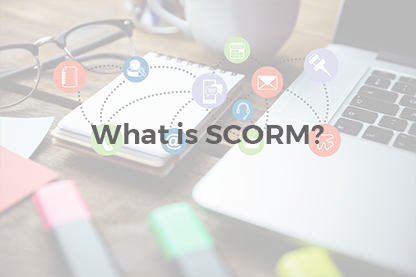When a business crosses borders and becomes multinational, there is the question of providing qualitative training in spite of employees’ location. Transnational companies pay particular attention to employee coaching since achieving the same quality of produced goods or provided services guarantees customers’ satisfaction and maintains the company’s reputation. When company’s employees speak different languages, LMS’ multi-language interface feature becomes a key element, transforming the LMS into a language barrier breaking tool.
The article is outdated. If you need to change JoomLMS language, please contact JoomLMS support team.
When a business crosses borders and becomes multinational, there is the question of providing qualitative training in spite of employees’ location. Transnational companies pay particular attention to employee coaching since achieving the same quality of produced goods or provided services guarantees customers’ satisfaction and maintains the company’s reputation. When company’s employees speak different languages, LMS’ multi-language interface feature becomes a key element, transforming the LMS into a language barrier breaking tool.
Company’s ability to provide the same learning materials to employees located in different countries opens up new opportunities:
- A possibility to hire perfect candidates from all over the world, thereby assuring the best possible skilled personnel;
- Giving employees a chance to feel themselves a part of the team, even if they are many miles away;
- Taking into account individual learning styles and cross-national differences.
That is why language variety option is so important.
JoomLMS allows changing both interface and course languages and uploading content in the languages your employees speak.
Choosing JoomLMS User Interface language
The interface language can be specified at the Back End by entering Components->JoomLMS->Configuration, clicking the Languages item in the left menu and choosing a default language from the available list. Users can change the set language from the Front End, if your website has a native Joomla! language switch or JoomFish plugin.

JoomLMS language pack consists of 14 languages (Brazilian, Bulgarian, Chinese, Czech, Danish, Dutch, English, French, German, Italian, Japanese, Norwegian, Russian and Spanish) and thus allows the LMS to be used in more than 30 countries around the world, including usage for corporate training goals.
*JoomLMS Back End is currently available only in English, Russian and German
Choosing JoomLMS course language
The default language for each course is selected when creating a course. To edit the course language you need to click on the course name at the Back End and click the Edit button. The chosen default course language will be saved and won’t be changed next time you enter the course, even after logging out. Students are allowed to change the course language, if necessary, with the help of User Options icon, but not to set as a default one. That is why when you enter the course again the language will be set back to default.

Configuring JoomLMS multilingual courses
JoomLMS allows creating multi-language courses as well: you need to specify different interface languages in the course properties and put the courses into different categories. To create courses in Chinese and in English, for example, you set up “Chinese” and “English” categories (set properties beforehand) and the users will be directed to the necessary courses list and will see the materials presented in the language relevant to the category name.
If the necessary language is not in the JoomLMS language pack, you can translate the JoomLMS language files yourself or use professional translator services. The actions to achieve this are as follows:
- Install JoomLMS software;
- Enter Joomla Administration Area-> Components -> JoomLMS -> Languages;
- Export the “English” language zip folder;
- Unzip and translate the exported file;
- Rename and zip the folder back;
- Import a new language zip file at the 'JoomLMS -> Languages -> Import' page;

The translated files will be available on your server in the components/com_joomla_lms/languages/ folder.
The main idea of multilingual LMS for employee training is breaking a language barrier and using LMS as effectively as possible, growing your business and extending the horizons.
For any questions concerning multilingual JoomLMS user interface, course language or translations, please contact our support team or watch the tutorial.
What to read next?
How to Organize ELearning Content Effectively with JoomLMS
How to Get Students to JoomLMS Classroom?
How to Use LMS Reporting to Improve ELearning Performance








